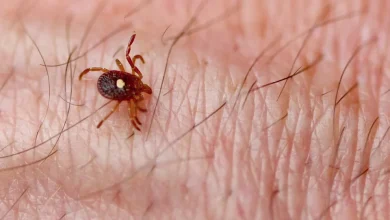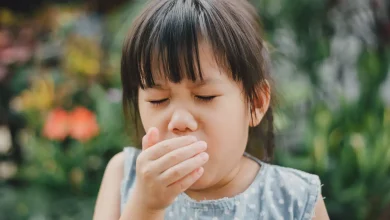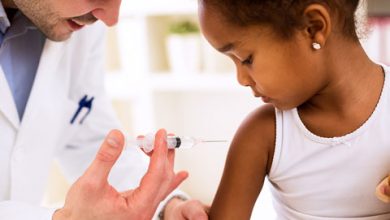First Human Bird Flu Case in the U.S. in 9 Months Detected in Washington

In November 2025, public health officials confirmed a worrying development: a human in Washington State has tested positive for bird flu, marking the first U.S. human case in nine months. The case involves a strain never before confirmed in people, raising both scientific and public health questions.
Background: Bird Flu in the U.S.
To understand the significance of this case, it’s important to look at recent trends in avian influenza in the United States:
- Spillover Events
In recent years, bird flu (avian influenza) has spilled over from animals to humans in multiple instances. Much of this has occurred among people who work closely with poultry or other animals. - H5N1 in Humans
In December 2024, the Centers for Disease Control and Prevention (CDC) confirmed a severe human case of H5N1 avian influenza in Louisiana. While there had been other human cases since April 2024 (including milder ones), this was the first particularly severe illness in the U.S. linked to H5N1. - Ongoing Animal Cases
Even during the nine-month gap in human infections, bird flu was highly active in animal populations. Poultry flocks and dairy herds have continued to be affected, according to USDA and public health data. The Washington Case: What Happened
Who is involved?
- The patient is an older adult from Grays Harbor County, Washington.
- They have underlying health conditions, which may affect how their illness manifests and how they respond to treatment.
- Since early November, the individual was hospitalized with serious symptoms, including high fever, confusion, and respiratory distress.
What strain is it?
- Laboratory testing and further analysis identified the virus as H5N5, a subtype of avian influenza.
- This appears to be the first known human infection with the H5N5 bird flu virus.
- While H5N5 is not thought to be significantly more dangerous than H5N1, it is notable because of its novelty in humans.
How was the person likely infected?
- Investigators believe the most likely source of infection is the person’s backyard poultry flock, which had exposure to wild birds.
- State and local health departments are working with agricultural authorities to trace possible exposure routes – including contacts between the person’s domestic birds and wild birds.
Public Health Response
Monitoring and Containment
- The Washington State Department of Health, together with the CDC, is monitoring close contacts, including family members and healthcare workers.
- So far, no signs of person-to-person transmission have emerged. Health officials report no other infections among those who had close contact with the patient.
- More than 100 contacts are reportedly being observed.
Risk Assessment
- The CDC and state health experts have assessed the risk to the general public as low.
- They emphasize that people with direct or prolonged exposure to potentially infected birds (wild or domestic) remain the most at risk.
- There is no evidence yet of sustained human-to-human transmission for this strain.
Seasonal Factors
- This incident comes as Washington enters a high-risk period, coinciding with fall and winter migration of wild birds.
- Migratory birds are known carriers, and their movement can help spread avian influenza to domestic flocks. Why This Case Matters
- First Human H5N5 Case
The fact that H5N5 — a strain previously only seen in animals — has crossed into a human host is scientifically significant. It raises questions about the virus’s adaptability and potential risks. - Gap in Human Cases
The nine-month lull in human infections had given some semblance of respite. This case underscores that the risk of spillover remains real, even when human cases appear to quiet down. - Backyard Poultry Risk
The likely link to backyard poultry highlights a continuing concern: people who raise domestic birds in close proximity to wild birds remain vulnerable. This is especially true in areas where bird flu is circulating among wild populations. - Surveillance Value
This case illustrates the importance of surveillance — not just in commercial farms, but in small-scale, non-commercial settings too. Public health systems need to monitor both animal and human populations to quickly detect and respond to potential threats.
Broader Implications & Lessons
For Public Health Infrastructure
- The response shows coordination across multiple agencies: local health departments, state agriculture agencies, and the CDC are all working together.
- Rapid testing, contact tracing, and investigation are crucial to prevent possible further spread.
For Poultry Owners
- Backyard flock owners should be especially vigilant: limit contact between your birds and wild birds, and practice strong biosecurity.
- If birds show signs of illness, or if a human in the household becomes unwell, they should notify local animal health authorities and public health officials immediately.
For the General Public
- While the risk is low, awareness matters. People should avoid touching wild birds or their droppings, especially in high-risk areas.
- Basic hygiene, such as washing hands after handling animals or being outdoors, remains a simple but effective line of defense.
For Researchers
- Scientists will likely study the genetic makeup of this H5N5 virus in detail: How similar is it to strains circulating in birds? What mutations enabled human infection?
- There’s also interest in how transmissible this strain might be, and whether it poses a long-term threat or remains an isolated spillover.
What We Don’t Yet Know
- Exact Exposure Pathway: While backyard poultry is the suspected source, it’s not confirmed whether the infection came directly from wild birds, the domestic flock, or both.
- Transmissibility: There is currently no evidence of human-to-human transmission, but more investigation is needed.
- Severity and Outcome: Beyond the hospitalization, detailed clinical outcomes (long-term recovery, complications) for the patient have not been publicly disclosed.
- Virus Evolution: It’s not yet clear whether this H5N5 strain has genetic features that make it more (or less) likely to spread or cause severe disease in humans.
Historical Context: Bird Flu & Humans
To put this case in perspective:
- Avian influenza (bird flu) refers to influenza A viruses that naturally circulate among wild aquatic birds and can infect domestic poultry. Some strains, under certain conditions, jump to mammals, including humans.
- H5N1, one of the most studied strains, has caused sporadic human infections globally. The U.S. has seen human H5N1 cases, particularly since 2024.
- In ferret studies, some human-derived H5N1 isolates showed the capacity for severe disease and transmission via respiratory droplets.
- However, to date, sustained human-to-human transmission of these avian influenza viruses remains rare or unproven in the U.S. context.
What Comes Next?
Here are likely steps and considerations moving forward:
- Continued Monitoring
- Health departments will continue to monitor the patient’s condition and contacts.
- Additional testing will likely be carried out on domestic birds associated with the patient’s flock as well as on wild bird populations in the region.
- Genetic Sequencing
- The virus will be sequenced to identify mutations and understand how closely it resembles other known H5N5 strains in animals.
- Such sequencing helps assess whether the virus has acquired properties (e.g., enhanced human cell binding) that could increase its risk.
- Public Advisories
- Authorities may issue or reinforce guidelines for bird owners, especially those with backyard flocks, to reduce the risk of spillover.
- Public messaging likely will emphasize low risk, but also encourage vigilance in high-risk settings.
- Research Priorities
- Virologists may conduct laboratory studies (e.g., cell culture, animal models) to assess how well H5N5 replicates in mammalian cells.
- Epidemiological investigations will aim to identify whether similar cases have gone undetected.
- Policy & Biosecurity
- State and federal agencies may review biosecurity regulations for backyard flocks and wild bird surveillance, particularly in migratory zones.
- There may be renewed focus on supporting small flock owners to implement safety measures, such as isolation of flocks from wild birds.
Conclusion
The confirmation of a human H5N5 bird flu case in Washington State is a significant event. It ends a nine-month period without reported human avian influenza infections in the U.S. and introduces a virus subtype not previously seen in people. While public health officials emphasize that the risk to the general population remains low, the case underscores the unpredictable nature of zoonotic spillover and the importance of vigilant surveillance.
This incident is a reminder that bird flu continues to be a dynamic threat: not only in commercial poultry and livestock but also in wild bird populations and small backyard flocks. Strengthening the interface between animal health and human health sectors remains critical to managing and mitigating such risks.
Going forward, the scientific and public health communities will be watching closely: studying the virus, tracking potential spread, and working to ensure that similar spillovers are caught quickly — before they can become something more.




